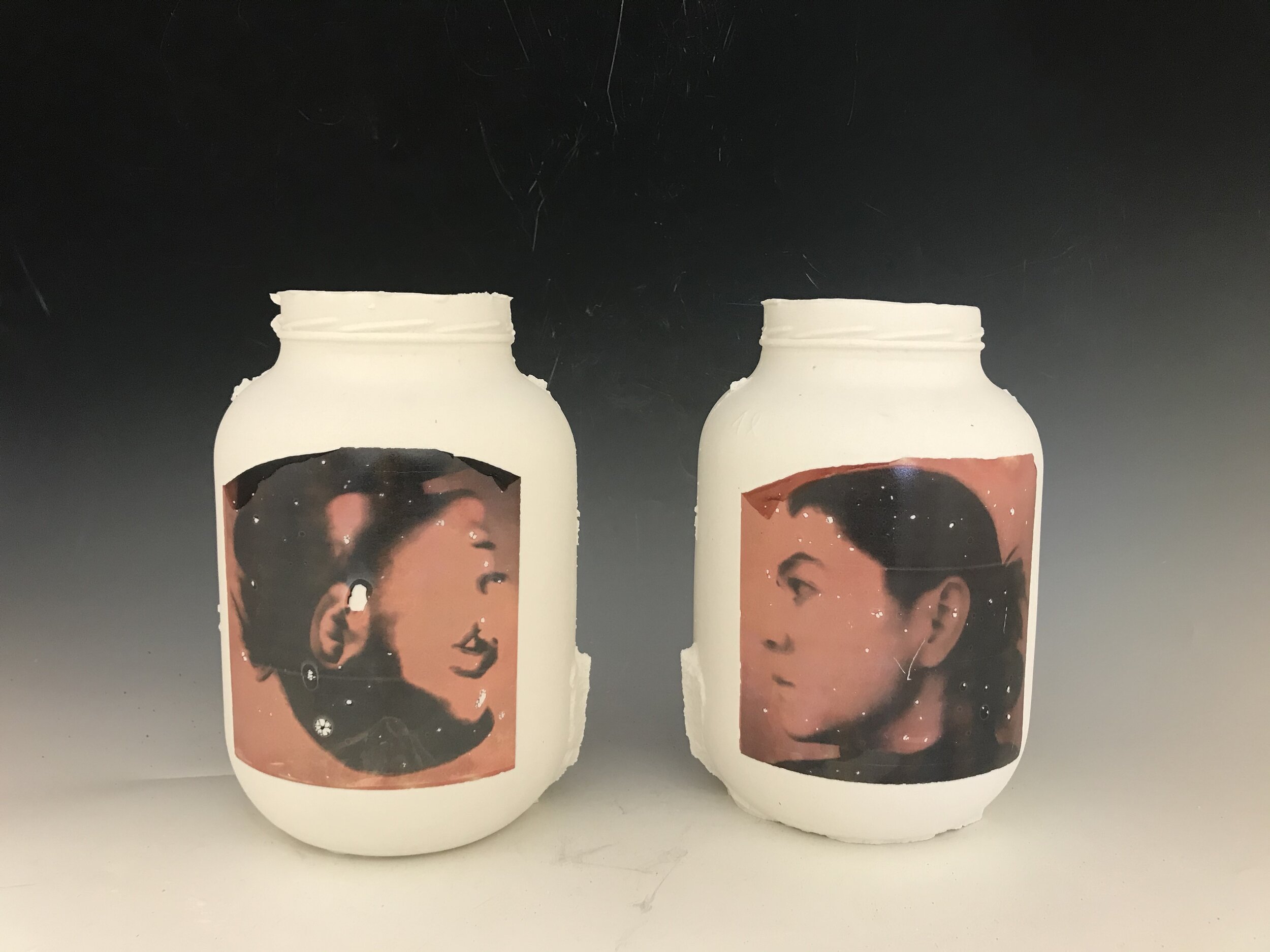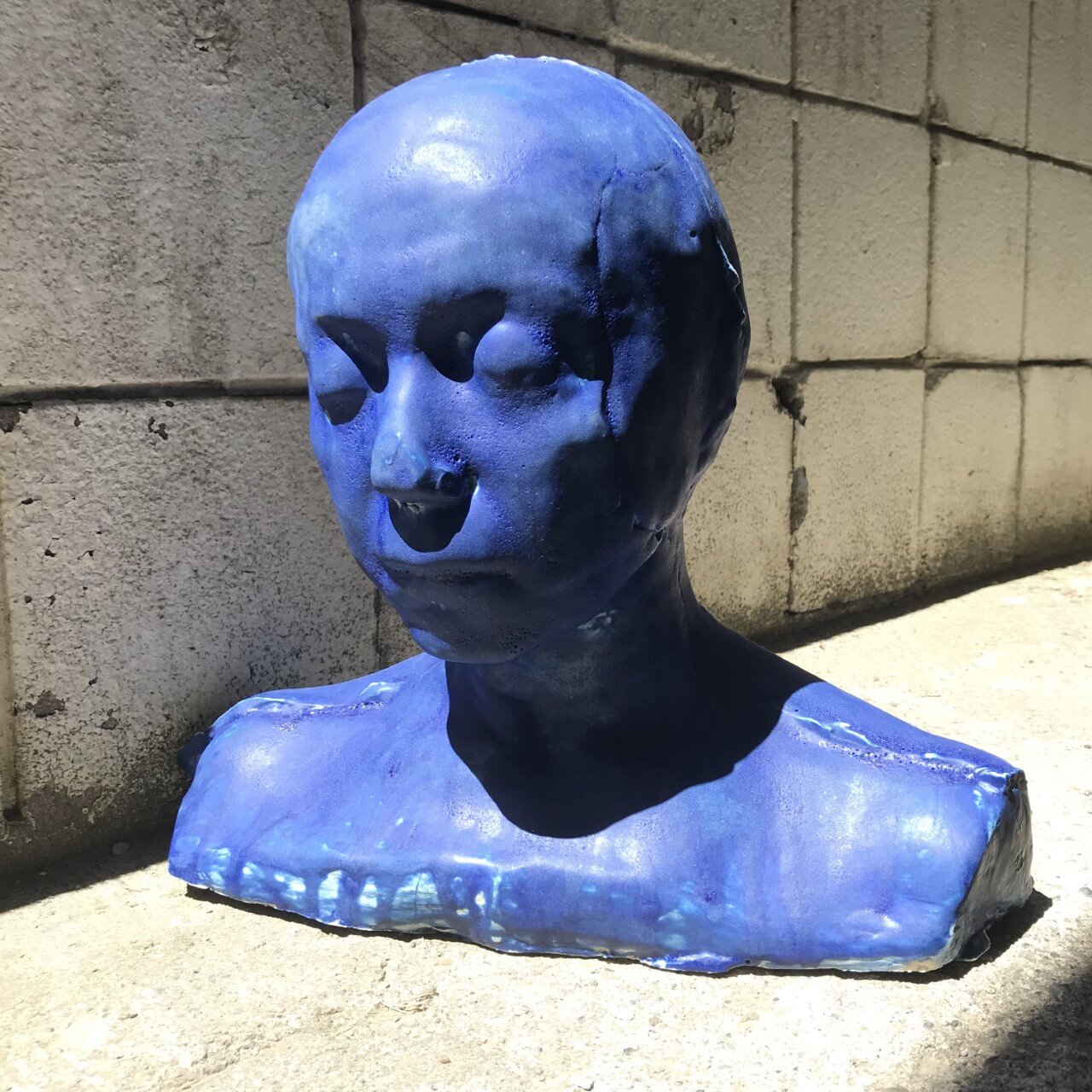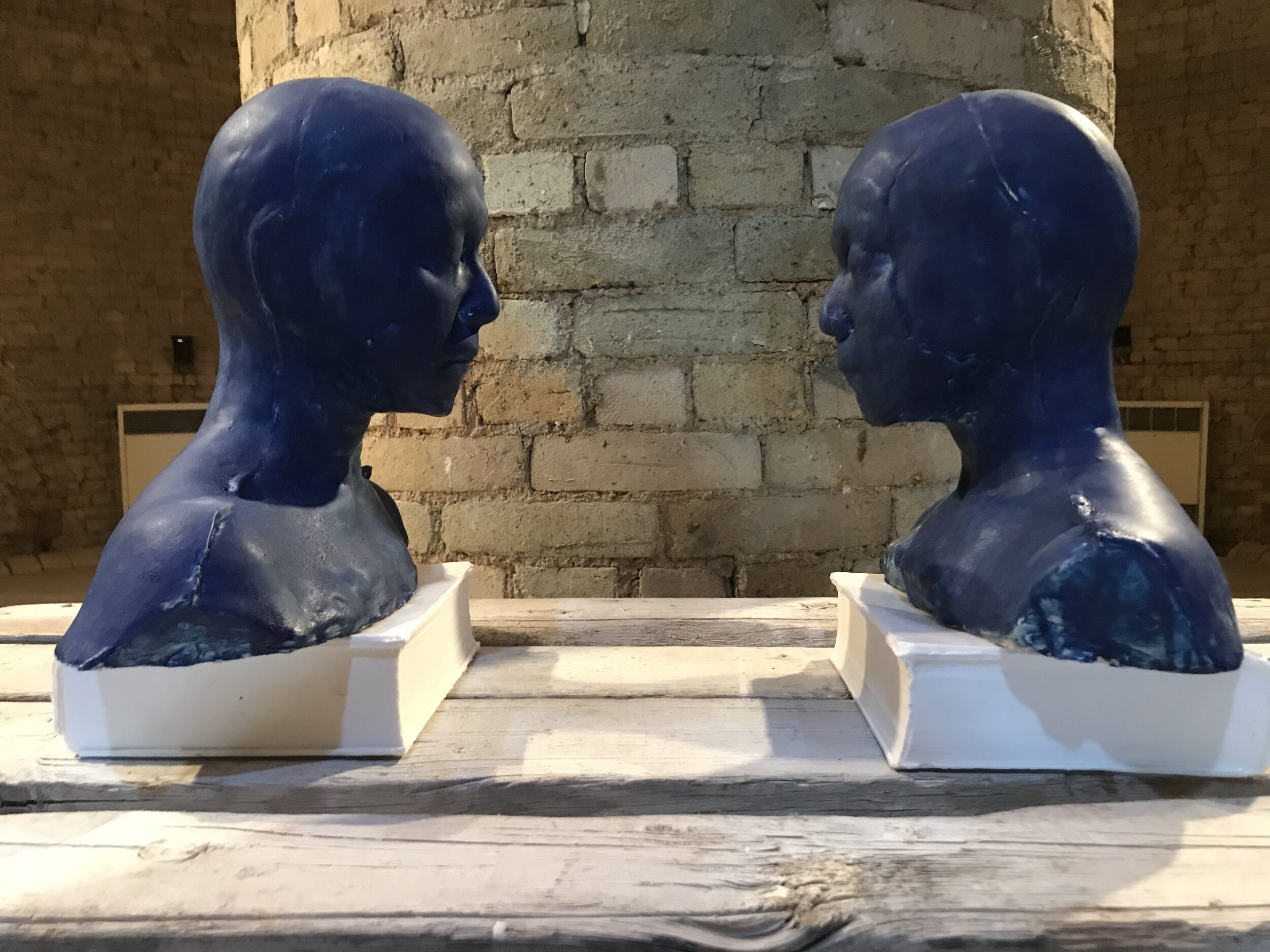Nurgül Rodriguez and the Art of Landing
Nurgül Rodriguez’s exhibition In the Vessel of my Skin, currently housed at the Ledge Gallery at Arts Commons, delves into the coexistence of body and soul and the conflict that can arise from both sharing space—a concept born and exemplified to her during the pandemic. The exhibit touches on immigration, gender disparity, and the desire to belong in a new country in a multitude of ways, each expressed using carefully moulded porcelain.
Nurgül describes herself as a feminist, immigrant, Middle Eastern, Calgary-based, Turkish-Canadian citizen. She exists in the roles of mother, sister, neighbour, teacher, wife, and artist, and continually finds new ways of understanding and interacting with her environment. But perhaps most astutely, she understands her role as a new settler in Canada, with her Canadian citizenship becoming an important part of her discussions of what it means to be “landed.”
“I am aware of colonialism, and my role as an immigrant in that,” she explains. “Since I arrived here, I’ve been constantly learning, interacting with people, asking and observing––all in an effort to understand what I am, why I’m here, and how to be a good citizen for this country and this land.”
“Whenever we immigrate or move somewhere, our footprints are the things that make land,” explains Nurgül, expanding upon the multiple iterations of feet that can be seen in her exhibition. In one of her works, blue and white pairs of shoes stand in a circle, as if awaiting the return of bodies that have left them grounded in place. The porcelain appendages speak to many things: the disassociation felt at the onset of the pandemic; the fear of good health and ability equating to validity as an immigrant; the first steps that are taken on new soil.
“These are my own feet––a vessel that holds power. Even when you only see the feet it completes the body, that alone asking: what is presence?”
When asked why she chose porcelain as her primary material, Nurgül expands on the importance (and difficulties) of linking a variety of themes within her work, and how the material itself can play a role in elucidating the artist’s intent.
“Most clay bodies you can get from the earth; you can dig it up and use it. Porcelain is a man-made material––it has a very colonial voice. There’s a degree of perfectionism to it as well, that it has to be one way. Porcelain has its own history, and today it is everywhere: it’s on our tables, forms our sinks, is found in almost every bathroom. I didn’t have a lot of things to use in order to connect my ideas,” she says, commenting on the range of concepts she touches on in her work. “So I decided to use my own body to mould and reflect, and I wanted to bring pluralism through by using a single material while also bringing in colour and text to represent more abstracted concepts. Everything is connected. There is no fine-line you can use to separate it all.”





Nurgül’s positionality as an immigrant has had a lasting impact on her life and art, and her own progression of experiences within Canada has influenced her artistic direction. From stepping onto Canadian soil for the first time, to the paperwork and documents required to gain citizenship, to her daily interactions with Indigenous peoples, other immigrants, and minorities, her art evolves from a reflection of immigration to a hope for inclusion.
“When I initially discovered I was being referred to as an ‘immigrant artist,’ I decided to embrace it. That helped me focus my research and what I wanted to say. After graduation I wanted to look at speaking. I’d always spoken with broken English and often found I wasn’t ‘desirable’. I wasn’t a good candidate for any jobs for three or four years. Sometimes they’d say I was underqualified, other times that there were stronger candidates with better speaking skills. I had just begun to make progress when the pandemic hit. I was so disappointed––like many of us––but at the same time we had to heal each other. That made me think about how I could bring ideas and experiences of immigration and being an immigrant artist into my work.
“Through socially-engaged craft and contemporary practices I’d like my future work to focus on inclusion and anti-racism in Canada. My aim is to continue to make large-scale installations, as I believe it allows us to interact in a space and explore, as well as use social engagement through text. I think creating a voice and then creating places to release our voices is very important. Text art helps us this way because we cannot always have a megaphone––during the pandemic we couldn’t even use our libraries. I’d like to bring into my work how much we have to read, how much we have to learn, and how much we have to educate each other and understand one another.
“It’s a never-ending story. I don’t want to romanticize it. I don’t want to undermine it. We just have to do it.”
Nurgül Rodriguez is a multidisciplinary and interdisciplinary artist and researcher. She is a student in adult education at University of Calgary/Werklund School of Education, beginning her PhD studies this fall. To view her exhibition In the Vessel of my Skin, visit www.artscommons.ca/3D.






